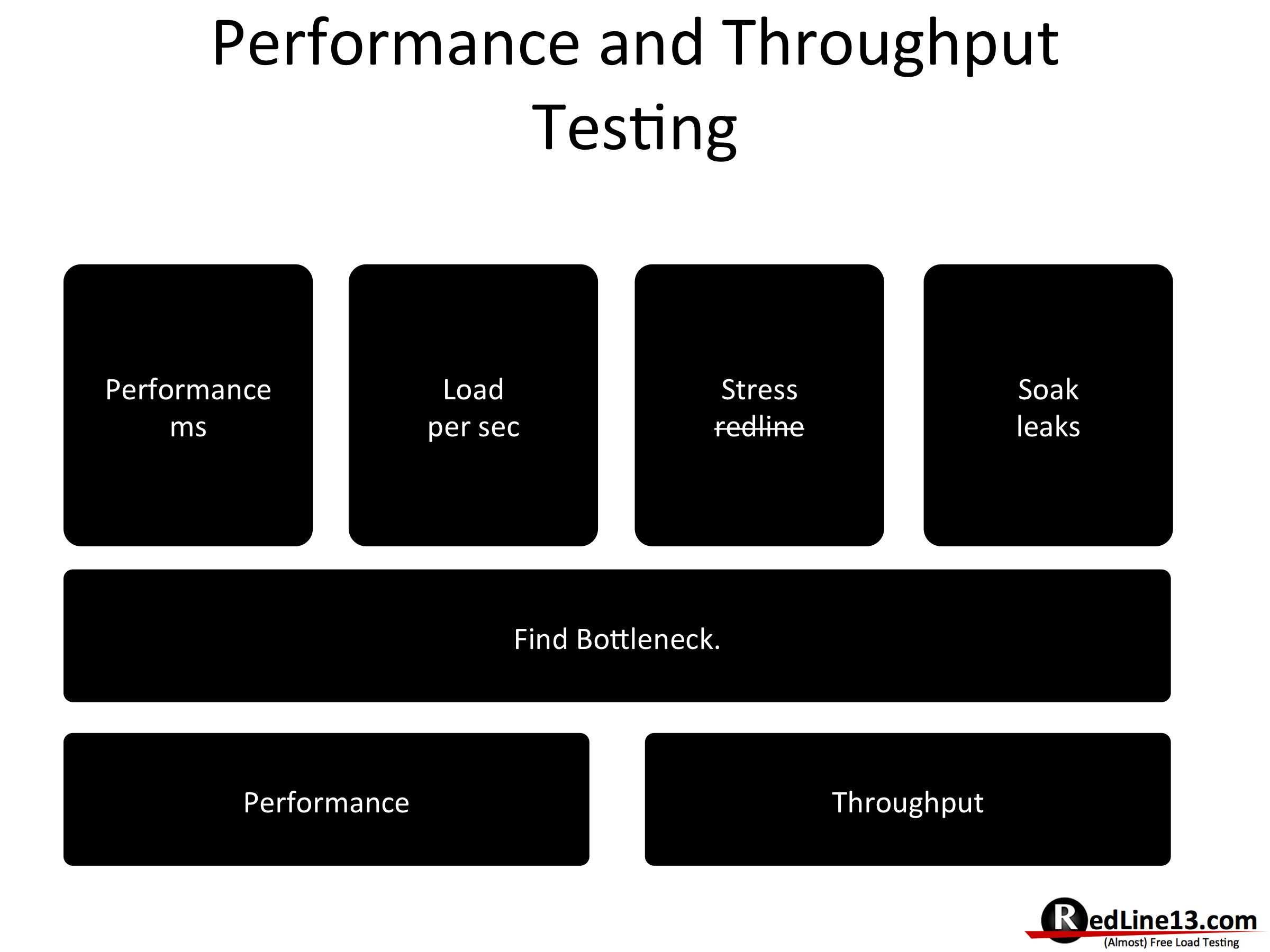From the Open Source Load Testing presentation http://www.slideshare.net/richardfriedman/open-source-load-testing
In this slide we will examine load testing where the application is a black-box. When we run our test on that black box we are looking to expose a performance bottleneck, typically this bottleneck will emerge as either performance or throughput issues.
- Performance. Measuring the response time of requests or test plans. Typically measured in ms or s, but it will be specific to your test plans.
- Throughput. Measuring the number of requests and response in relation to time. Typically measured in transactions per second (TPS), the appropriate scale will be dependent on the scenario.
We use different testing types to push on both of these metrics. These testing types are not limited to the following, but here is a recap of a few and what they are working out.
- Performance. In performance tests we might be testing isolated aspects of our application looking to improve a specific response time.
- Load. In a load test we might be testing a real user behavior and looking for meeting our throughput requirements. At what throughput does performance degrade and thus throughput throttle.
- Stress. Here we typically look to find the
redlineof where our test will fall over. At this point we might be physically taking down our environment so it’s throughput would virtually be zero. - Soak. While software never gets tired it can get bloated, memory leaks over time can lead to degraded performance or eventually crashing.
Some of my favorite resources for learning more about the different types of load tests can be found on Alexander Podelko’s blog.


1 Comment
Comments are closed.